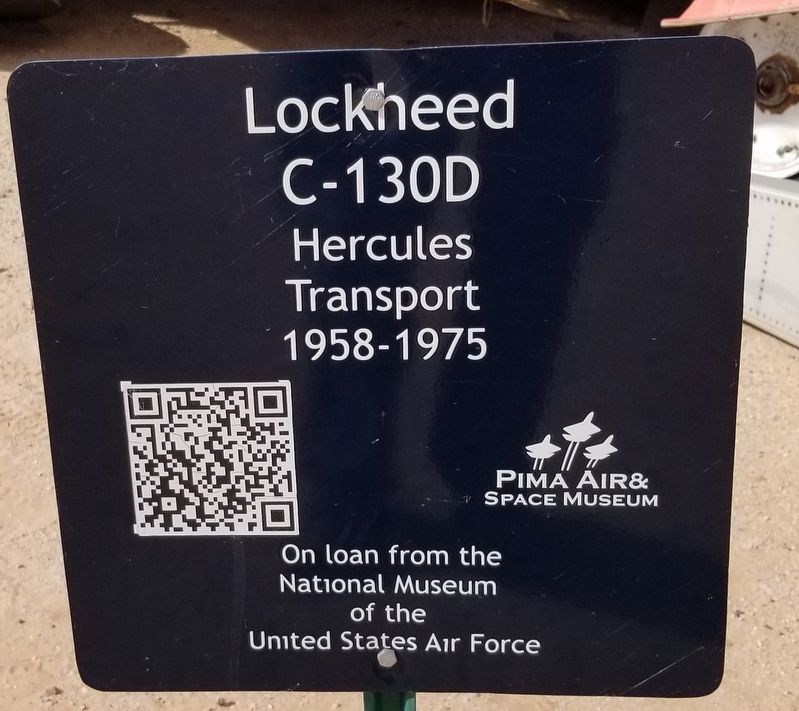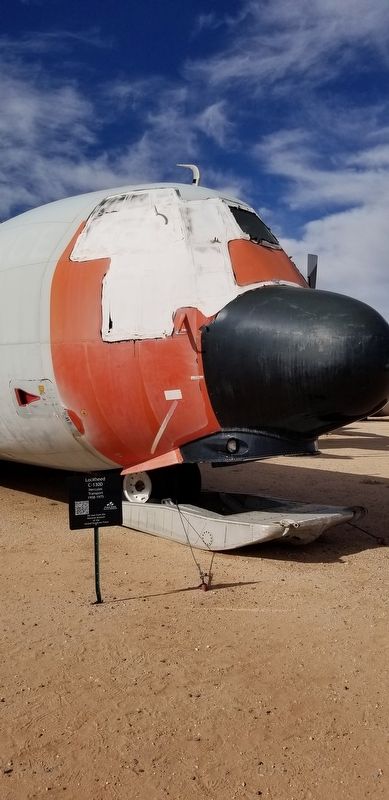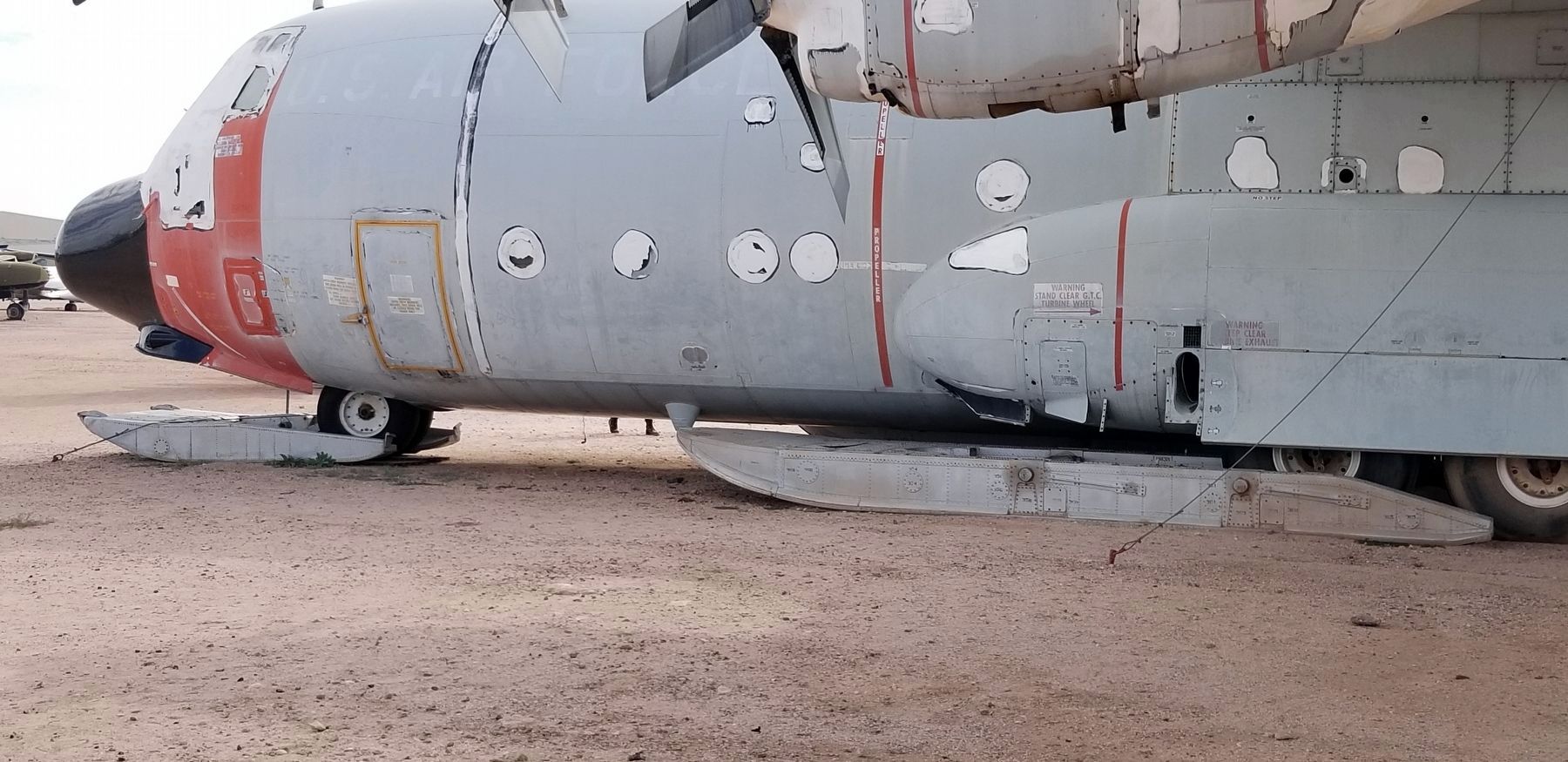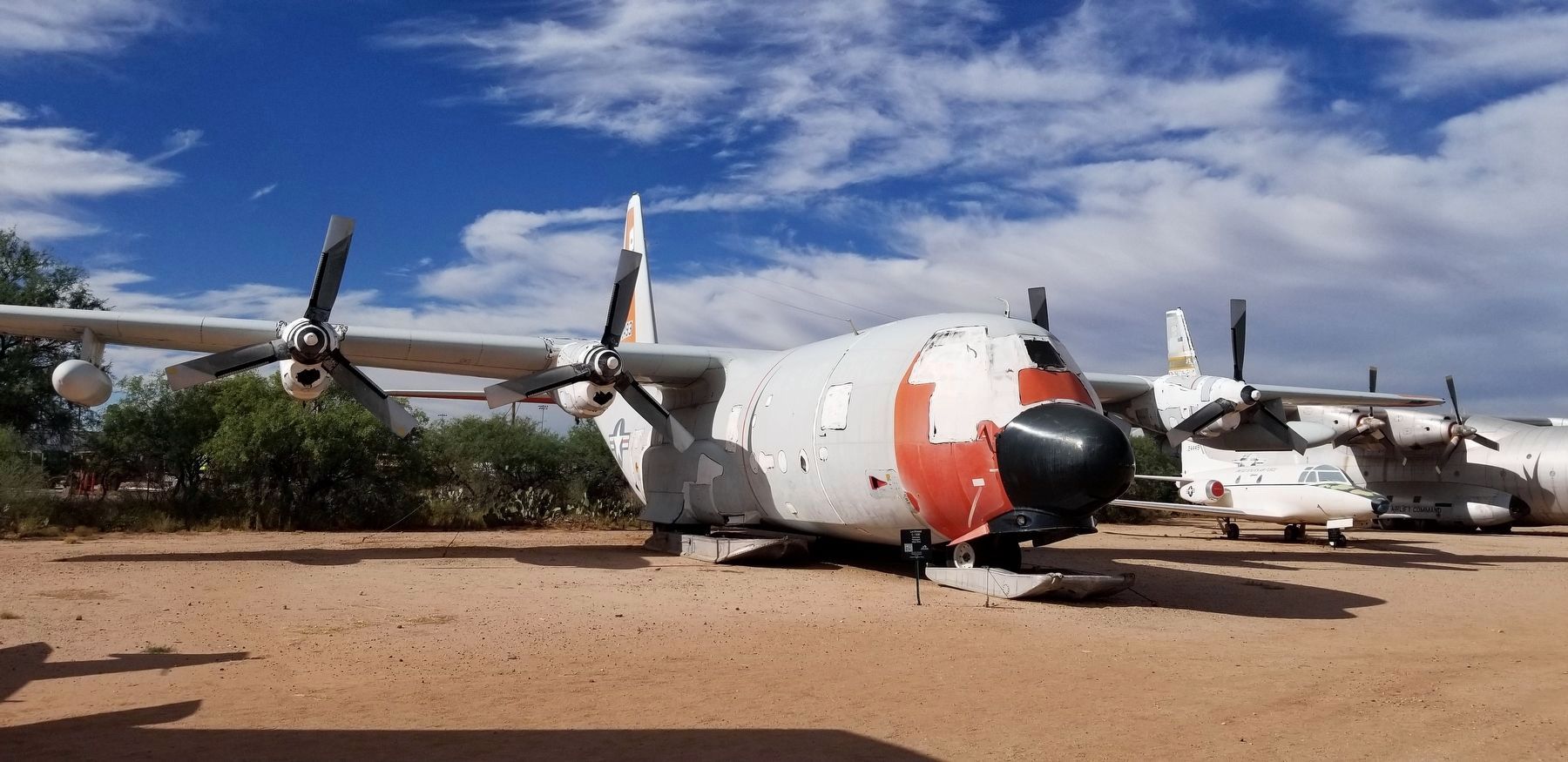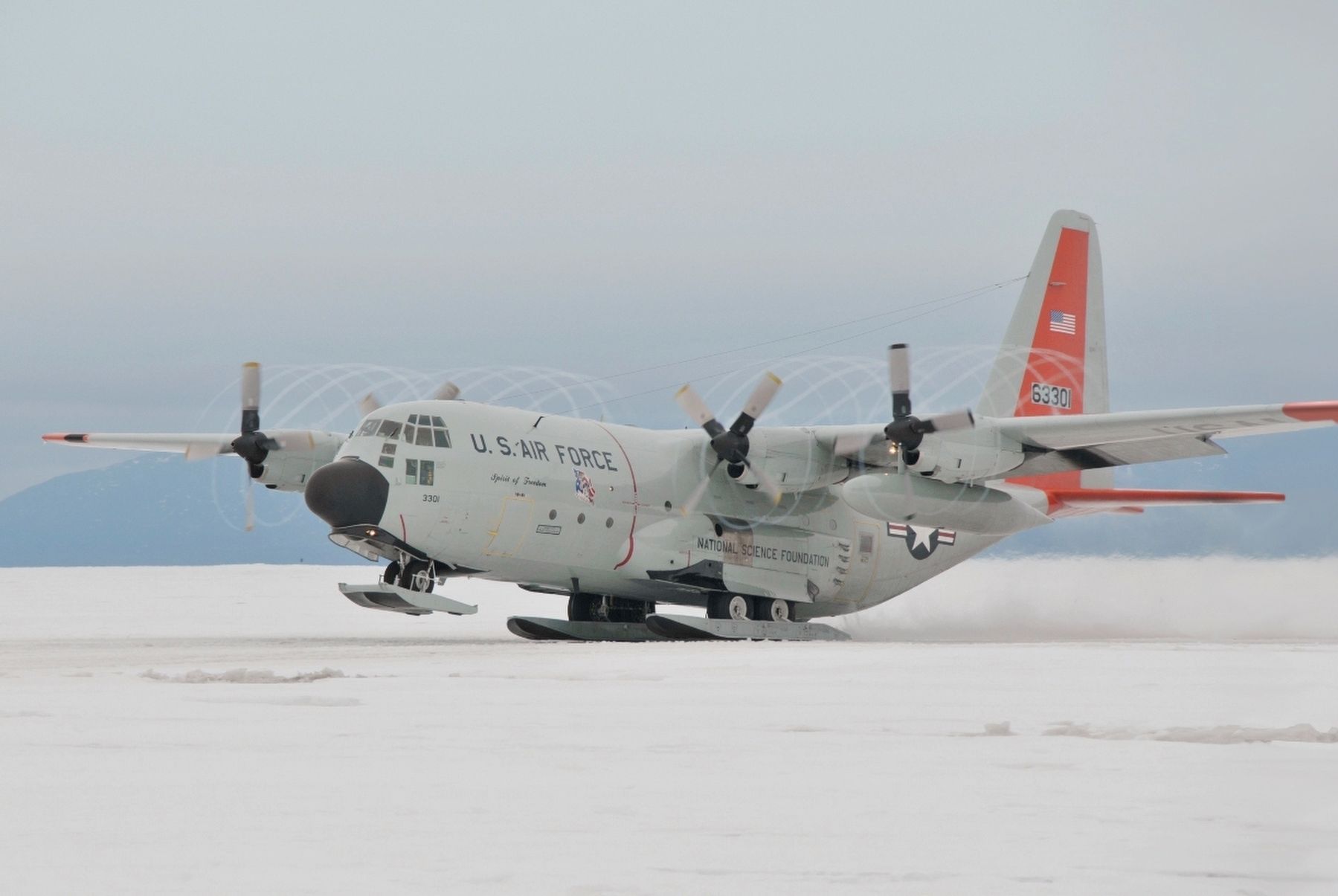Thomas Jay Park in Tucson in Pima County, Arizona — The American Mountains (Southwest)
Lockheed C-130D
C-130D
Hercules
Transport
1958-1975
On loan from the
National Museum
of the
United States Air Force
Erected by Pima Air & Space Museum.
Topics. This historical marker is listed in this topic list: Air & Space.
Location. 32° 8.352′ N, 110° 52.233′ W. Marker is in Tucson, Arizona, in Pima County. It is in Thomas Jay Park. Marker can be reached from East Valencia Road, 0.3 miles west of South Wilmot Road. The marker is located in the southwestern section of the Pima Air & Space Museum. Touch for map. Marker is at or near this postal address: 6000 East Valencia Road, Tucson AZ 85756, United States of America. Touch for directions.
Other nearby markers. At least 8 other markers are within walking distance of this marker. Ryan AQM-34L (a few steps from this marker); Beechcraft UC-45J (within shouting distance of this marker); North American CT-39A (within shouting distance of this marker); Convair T-29B (within shouting distance of this marker); Grumman HU-16A (within shouting distance of this marker); Lockheed C-130A (within shouting distance of this marker); Convair C-131 (R4Y-1) (within shouting distance of this marker); Douglas C-133B (within shouting distance of this marker). Touch for a list and map of all markers in Tucson.
More about this marker. The marker is located on the outside section of the Pima Air & Space Museum. There is an entry fee required to visit both the inside and outside sections of the museum.
Regarding Lockheed C-130D. When configured with special ski-equipped landing gear, the C130 aircraft could land in the dangerous Arctic environment to support the operation of the numerous research stations in Antarctica.
Also see . . . Lockheed C-130 Hercules.
The Lockheed C-130 Hercules is an American four-engine turboprop military transport aircraft designed and built originally by Lockheed (now Lockheed Martin). Capable of using unprepared runways for takeoffs and landings, the C-130 was originally designed as a troop, medevac, and cargo transport aircraft. The versatile airframe has found uses in a variety of other roles, including as a gunship (AC-130), for airborne assault, search and rescue, scientific research support, weather reconnaissance, aerial refueling, maritime patrol, and aerial firefighting. It is now the main tactical airlifter for many military forces worldwide. More than 40 variants of the Hercules, including civilian versions marketed as the Lockheed L-100, operate in more than 60 nations. Source: Wikipedia(Submitted on November 12, 2021, by James Hulse of Medina, Texas.)
Credits. This page was last revised on November 13, 2021. It was originally submitted on November 12, 2021, by James Hulse of Medina, Texas. This page has been viewed 130 times since then and 8 times this year. Photos: 1, 2, 3, 4, 5. submitted on November 12, 2021, by James Hulse of Medina, Texas.
